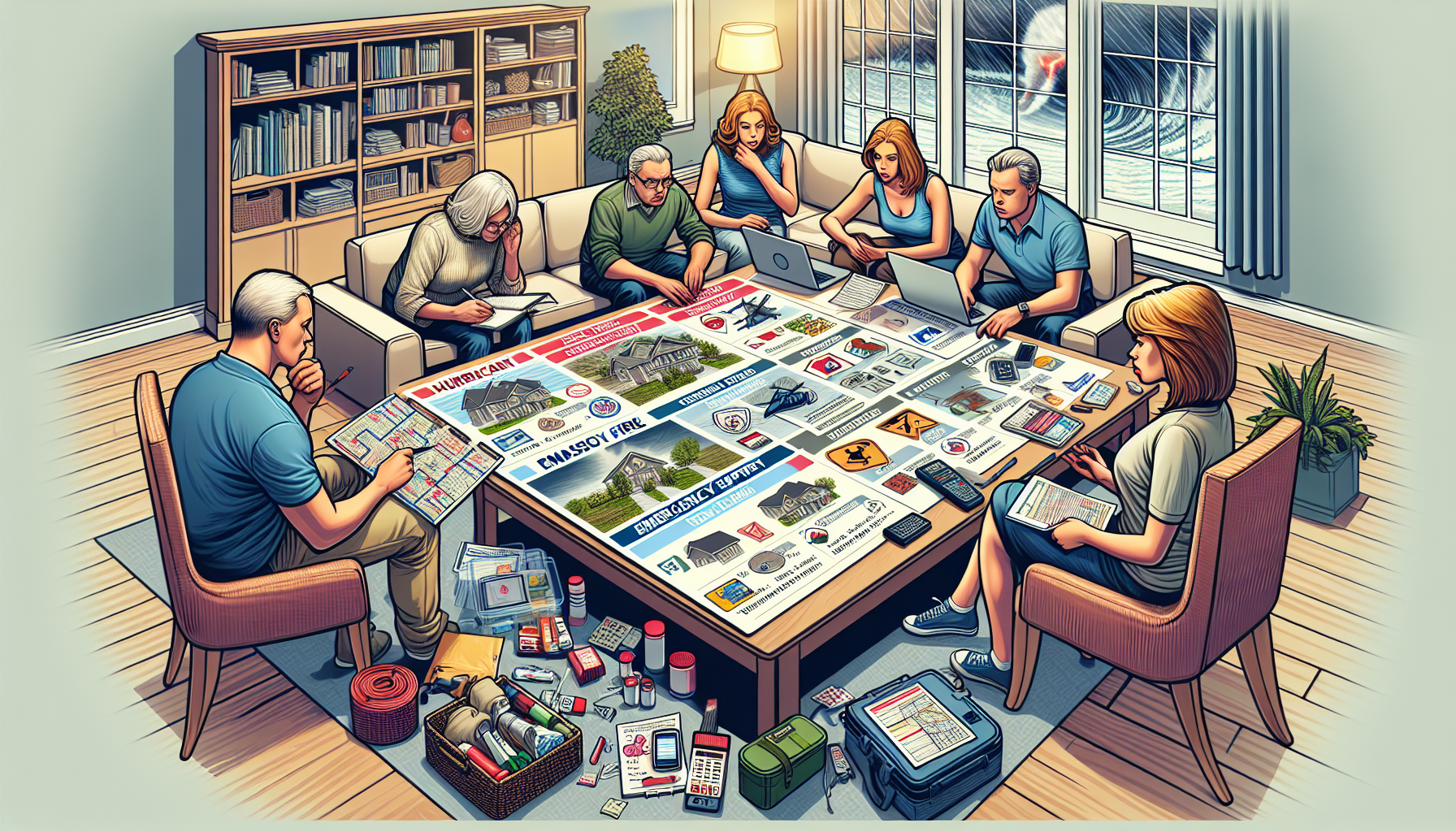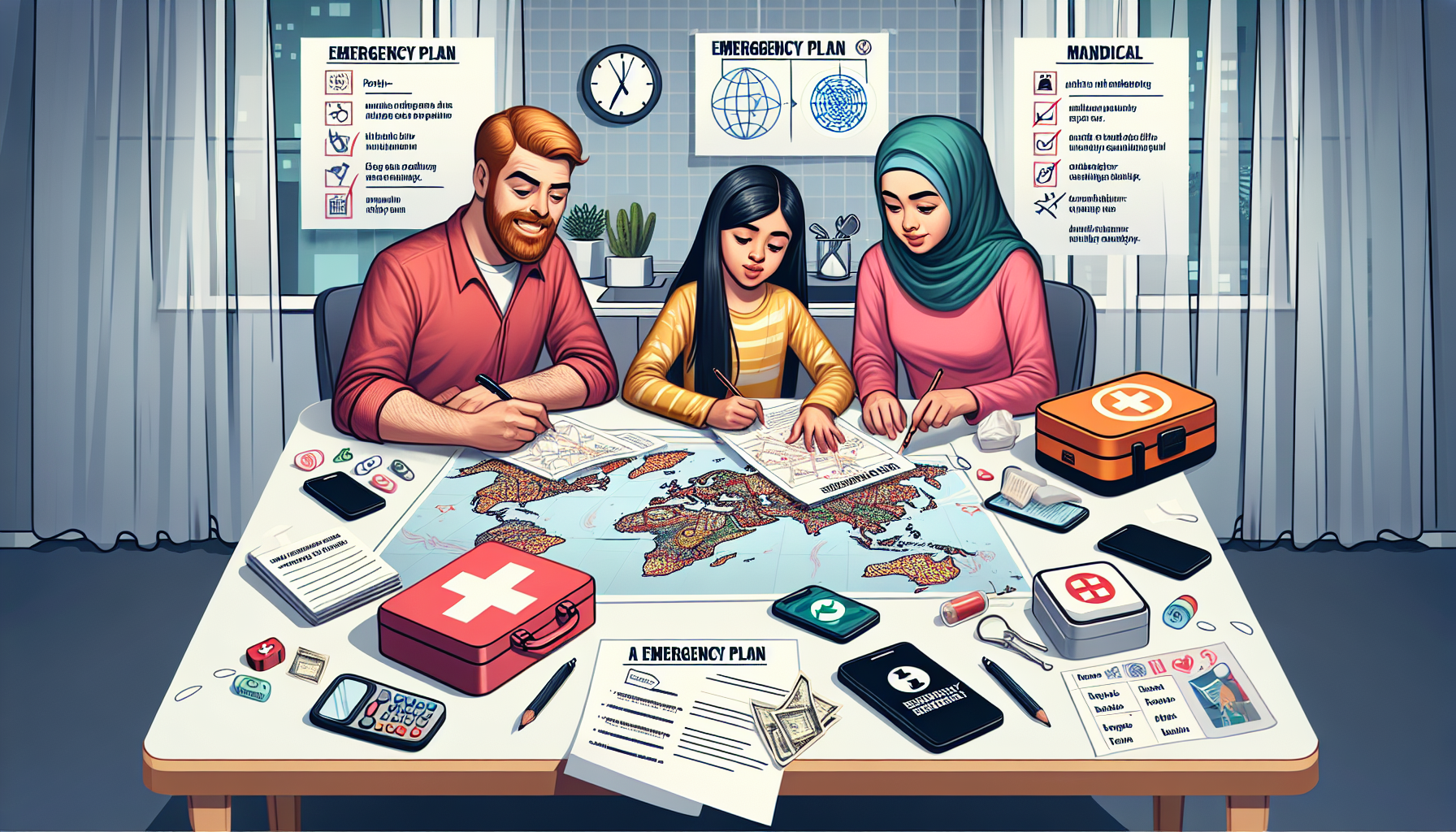Imagine the peace of mind that comes with having a well-prepared family emergency plan. From natural disasters to unexpected incidents, knowing exactly how to protect your loved ones and navigate through challenging times can make all the difference. In this article, you will discover the essential steps to create a comprehensive family emergency plan that ensures the safety and security of everyone you hold dear. So, let’s get started on this empowering journey together.
Creating a Family Emergency Plan
When it comes to keeping your family safe during emergencies, having a well-thought-out emergency plan is crucial. A family emergency plan helps you stay prepared and ensures that everyone knows what to do in case of a disaster. In this comprehensive guide, we will take you through the steps of creating a family emergency plan that covers all the necessary aspects, from assessing your family’s needs and risks to updating and revising your plan regularly.
Assessing Your Family’s Needs and Risks
The first step in creating a family emergency plan is to assess your family’s needs and risks. Identify the potential hazards in your area, such as natural disasters like earthquakes, hurricanes, or floods, as well as any specific risks that might apply to your family, such as medical conditions or disabilities.
Consider the specific needs of each family member, such as young children, elderly or disabled individuals, or pets. Take into account their mobility, medication requirements, and any special equipment they may require during an emergency.
By identifying these needs and risks, you can tailor your emergency plan to address them effectively and ensure the safety and well-being of everyone in your family.
Establishing Communication Channels
During an emergency, communication is key. Establishing reliable communication channels is essential to keep your family informed and connected. Determine a primary and a backup method of communication for your family.
Cell phones are often the primary method of communication, so ensure that every family member has a fully charged phone and backup battery. However, keep in mind that during certain emergencies, cell service may be disrupted. In such cases, having a designated meeting point where family members can gather is essential.
Consider alternative communication methods, such as walkie-talkies or a designated landline phone, that can still function without electricity or cell service. Share important contact information, including emergency services and out-of-town relatives or friends, with every family member.

Identifying Meeting Places
In emergencies, it is crucial to have predetermined meeting places where your family can regroup if you become separated. Choose two different meeting places: one near your home and another outside your immediate neighborhood.
For the meeting place near your home, choose a location that is easily accessible and familiar to all family members. It could be a neighbor’s house, a community center, or a nearby park. Make sure everyone knows how to reach this meeting place safely.
The meeting place outside your immediate neighborhood should be farther away, such as a relative’s house or a designated shelter. This meeting place is essential if your home or immediate area is not safe or accessible during an emergency. Ensure that all family members are aware of this location and know how to get there.
Assembling Emergency Kits
Having emergency kits readily available is crucial for surviving during and after a disaster. Each family member should have their own personal emergency kit, as well as a larger family emergency kit that includes supplies for everyone.
Personal emergency kits should include essential items like non-perishable food, water, a flashlight, batteries, a first aid kit, medications, and important documents. Customize these kits according to each family member’s specific needs, such as baby supplies, pet supplies, or extra medications.
The family emergency kit should include additional supplies like a battery-powered radio, extra water and food, blankets, extra clothing, and tools. Keep these kits in easily accessible locations, such as near the exits of your home or in the trunk of your car, ensuring that they can be easily grabbed in case of an emergency.

Organizing Important Documents
It is crucial to have copies of important documents readily available in case of an emergency. Make sure you store these documents in a waterproof and fireproof container or folder that is easily accessible.
Include documents such as identification cards, passports, birth certificates, social security cards, insurance policies, medical records, and important contact information. Also, consider storing copies of irreplaceable sentimental items, such as family photos or heirlooms.
Keep a digital copy of these documents as well, stored securely in a cloud-based service or on an external hard drive. Make sure every family member knows where these documents are stored and how to access them.
Assigning Responsibilities and Roles
To ensure a smooth and organized response during emergencies, it is essential to assign responsibilities and roles to each family member. Discuss with your family members what tasks they would be responsible for during an emergency.
Assign tasks such as gathering emergency kits, securing the home, caring for young children or pets, contacting emergency services, or monitoring weather updates. Clearly communicate these responsibilities and make sure everyone understands their role and knows what to do in different emergency scenarios.
By assigning responsibilities and roles, you can streamline your family’s response during an emergency and ensure everyone is actively contributing to the safety and well-being of the whole family.

Making Emergency Contacts
In an emergency, you may not always have access to your usual contacts. It is important to create a list of emergency contacts that includes local authorities, emergency services, hospitals, doctors, utility providers, and out-of-town relatives or friends.
Store these contacts in your phone, write them down on a physical list, and make sure every family member has access to this information. Teach children how to use the speed dial feature on their phones to contact emergency services or other trusted individuals.
It may also be helpful to reach out to your neighbors and exchange contact information, so you can rely on each other for support and assistance during emergencies.
Creating Evacuation Plans
In some emergencies, it may be necessary to evacuate your home. Develop evacuation plans for different scenarios, such as a fire, a flood, or a chemical spill. Outline the routes you would take to leave your home and identify alternative routes in case your primary route is blocked.
Include the location of your designated meeting places in your evacuation plans. Assign responsibilities such as grabbing the emergency kits or ensuring everyone is accounted for during the evacuation.
Practice these evacuation plans regularly with your family to ensure everyone knows the routes and procedures to follow. This practice will make the actual evacuation smoother and less stressful for everyone involved.

Practice and Review
Creating a family emergency plan is not a one-time task. Regularly practice and review your plan to ensure everyone remembers the procedures and to identify any areas that need improvement.
Conduct drills with your family to simulate different emergency scenarios, such as a fire or an earthquake. Practice evacuations, communication methods, and reuniting at the designated meeting places. These drills will help everyone become more familiar with the plan and help identify any gaps or areas that need adjustment.
Regularly review and update your plan to reflect any changes in your family’s needs, such as the addition of new members, changes in medical conditions, or relocation to a new home.
Updating and Revising
As time goes on, your family’s needs and circumstances may change. It is important to regularly update and revise your family emergency plan to ensure it remains relevant and effective.
Update your plan whenever there are changes in family dynamics, such as the birth of a new child or the care of an elderly family member. Additionally, review and update your emergency kits, important documents, and contact information at least once a year.
Revisit your plan with your family and discuss any changes to ensure everyone is aware of the updates. By continuously updating and revising your plan, you can ensure that it remains an effective tool for keeping your family safe in times of emergency.
Remember, creating a family emergency plan is all about being prepared. By taking the time to assess your family’s needs, establishing communication channels, identifying meeting places, assembling emergency kits, organizing important documents, assigning responsibilities and roles, making emergency contacts, creating evacuation plans, and practicing and reviewing your plan, you are equipping your family with the tools and knowledge to navigate through emergencies together. Stay safe, and don’t forget to regularly update and revise your plan to ensure its effectiveness.


